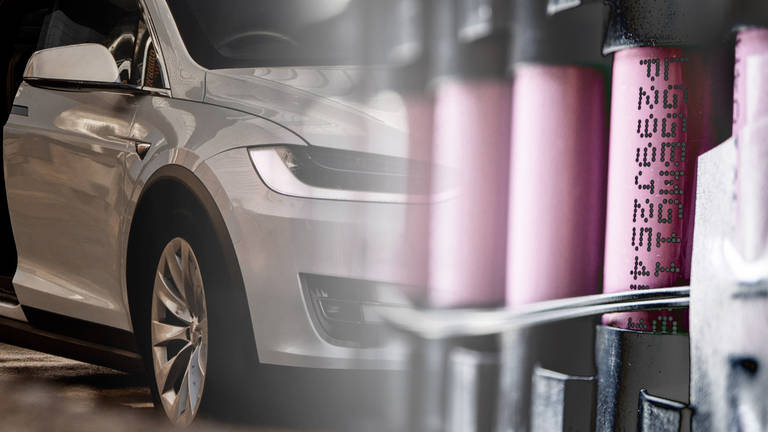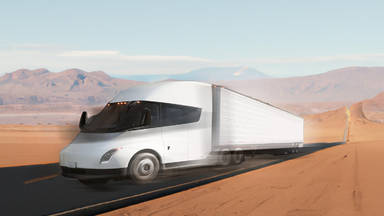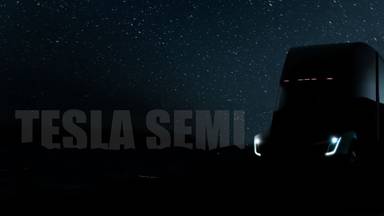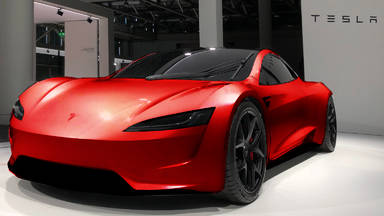
The new Model Y 2.0 that is going to be produced at Gigafactory Austin and also Gigafactory Berlin is going to have Tesla’s newest battery technology, the 4680 battery cells in the structural battery packs. This new battery technology and also the new Model Y 2.0 definitely have the potential to once and for all render hybrids and even plug-in hybrids obsolete.
When was the last time you watched a movie from a VHS tape? and for that matter when was the last time that you even watched a movie on a DVD? When it comes to personal media consumption, people obviously do not use VHS tapes anymore and they actually do not even use DVDs anymore. Instead, they rely on digital media, whether that is through their smart televisions or their computers. The reason is that digital media is much more convenient and a much better technology that has rendered VHS tapes and DVDs obsolete.
Before the Tesla Model S came on the scene in 2012, there were not any practical EV options on the market. This left the market wide open for hybrid cars, and hybrids were pretty much what was available for those who cared about the environment.
While the Model S is and was a great car even back in 2012, it had one big huge problem for many people and that was the fact that the price was much higher than many people could afford. Because of this, the hybrid lived on and also it paved the way for the plug-in hybrid electric vehicles. Now that the more affordable Tesla Model 3 is available, however, hybrids and plug-in hybrids make a lot less sense, and the market is now reflecting that fact.
Despite that, as you will read about a little later on in the article, there are still some valid arguments to make a case for a plug-in hybrid electric vehicle. Even with a great Tesla and other electric vehicles on the market, that door has not been completely shut yet, but things are about to change in a huge way.
Back in 1997, Toyota started selling Prius, which was one of the first mass-produced hybrid vehicles on the market. Toyota Prius was considered the green car choice for many environmentally conscious individuals, including many celebrities. Still, since its peak in 2012, sales of Toyota Prius have been shrinking every year. While there is never just a single factor that leads to a sales decline for a vehicle, one of the biggest factors in the decline of the sales of Toyota Prius hybrid has to do with a little company you may have heard of, Tesla.
Consumers are showing what they genuinely want with their money. A great-looking, technology-forward car, with great performance and one that is all-electric. While Toyota Prius sales have seen a steep decline in recent years, the Tesla Model 3 has, of course, seen a steep increase in sales over the past several years. When it comes to united states sales of the Tesla Model 3, that number grew to more than 200,000 in 2020. There is no doubt that 2021 will also be a great year for the Model 3.
Despite the sales decline with Toyota Prius, Toyota has found some success with the RAV44 hybrid in recent years. In a very SUV-hungry market, the united states, this shows that the hybrid still has a market and is not yet dead. Recently, Toyota also began deliveries of Toyota RAV44 prime hybrid which is the plug-in hybrid version, with up to 42 miles of battery-only range. While many people are strong supporters of full-battery electric vehicles, and not so much for hybrid vehicles, still a strong case can be made for a plug-in hybrid in today’s market, especially a plug-in hybrid SUV like Toyota RAV44.
Let us dive into some of the reasons why there is somewhat still of a case for a plug-in hybrid electric vehicle, and how Tesla’s new 4680 batteries will soon render all these excuses obsolete.
One of the first important issues that Tesla has already solved is the availability of charging stations for an electric vehicle. When it comes to traveling long distances in a Tesla electric vehicle, Tesla has well over 25,000 superchargers worldwide. This, obviously, makes long-distance travel very easy to do in a Tesla electric vehicle. Nonetheless, while there are several other great charging networks out there like IONITY in Europe and “Electrify America” in the united states, if you remove Tesla from the mix, a plug-in hybrid electric vehicle could make sense for something that needs to travel long distances.
Another reason why a customer might potentially look at a plug-in hybrid-electric vehicle versus a full-electric vehicle is the fact that even a great electric SUV like the Model Y on a full charge, the long-range all-wheel-drive version has a range of around 326 miles. Whereas the combination of the electric and gas range for Toyota RAV44 prime hybrid will give you somewhere around 600 miles of range.
The good news is, though, as Tesla mentioned at battery day, the new 4680 batteries combined with the structural battery packs definitely have the potential to increase the range of the Tesla Model Y by a large amount.
It is not yet clear how much Tesla is going to immediately raise the range of the Model Y, the ones that are going to be produced at Gigafactory Austin and Gigafactory Berlin. But Tesla is not going to remarkably change the range very much for a while because they do not want to steal sales away from their other versions of the Model Y. However, in the coming years Tesla will improve the Model Y range and a 400-mile range Model Y could be available in some years in the future.
Another reason why a consumer might consider a plug-in hybrid vehicle versus a full-battery electric vehicle comes down to the charging speed. Even though Tesla has a very robust and great charging network, the fact remains that it does add some time to your trip when you travel with an electric vehicle.
For instance, if you go on a trip from Los Angeles, California to Boise, Idaho in Toyota RAV44 with around 600 miles of range, you would actually only have to make one fuel stop and that would probably take less than 10 or 15 minutes. On the other hand, if you drive this same trip in a Model Y, you would need around seven charging stops and your total charging time would be just under two hours.
That is a huge variance. However, the fact remains that you cannot take a long trip like this and not stop several times for bathroom breaks, to stretch your legs, and also to get some food. When you actually do a trip in real life and you compare the two, you can do a lot of those things, like eating stretching, and going to the bathroom at a Tesla supercharging station. Hence, when you actually even it out, the trips will actually be a lot closer in time than they might look.
However, the problem remains that the average consumer may not be aware of this fact and they may not take into account the other stops and average that out. They may think of an electric vehicle as being impractical so that Tesla’s and other electric vehicles need to have faster charging in order to reach a better share of the market than they already have.
The biggest reason why somebody goes with a plug-in hybrid EV instead of a battery-only EV comes down to the cost difference between these vehicles. The 2021 RAV4 prime SE with a common equipment package can be purchased for around 45,000 dollars. Note that this is selling above MSRP because of high demand at the moment. Once Toyota can produce more of these vehicles and the supply picks up a little, this price should come down somewhat closer to MSRP.
The Tesla Model Y long-range all-wheel-drive version can currently be purchased for around 53,000 dollars. When you add in the 12,000 Destination and Doc Fee, even with the current inflated price of Toyota RAV44 prime, this represents roughly an $8,000 price variance between these two SUVs.
The delicate point when it comes to the actual cost of owning a vehicle is that you cannot just factor in the purchase cost, but you have to also factor in the cost of fuel, maintenance, and other similar factors. Looking at the lower cost of maintenance and the lower cost of powering an EV definitely helps make up for the cost difference.
On top of that, there is legislation currently going through the US Government that could reinstitute a higher tax credit for companies like Tesla and GM that have sold too many vehicles to be eligible for the current tax credit. Additionally, once Tesla’s 4680 batteries hit massive scale production, Tesla can start realizing the cost-savings that they mentioned on battery day. That will also allow for a lower-cost option for the Model Y and could once again change the math on a price equation much in favor of the Model Y and other EVs from Tesla.
In conclusion, hybrid and plug-in hybrid vehicles will soon be a relic of the past much in part to Tesla and the 4680 batteries.









